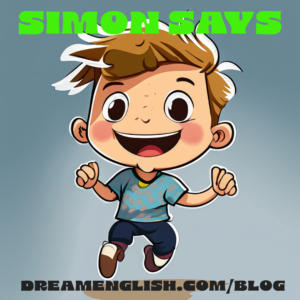Quick Game Facts:
- Name: Pictionary
- Recommended Ages: 6-12
- Materials Needed: Flashcards, drawing materials (e.g., paper, markers)
- Prep Time: Minimal

Introduction:
Hello, young artists and enthusiastic educators! Are you ready to let your creativity soar while sharpening your language skills? Look no further than the exciting game of “Pictionary”! In this interactive activity, you’ll have the opportunity to express yourself through drawings while others guess the word you’re illustrating. Get your drawing materials ready, embrace your artistic side, and let’s dive into the world of “Pictionary” for an unforgettable language adventure!
Overview:
- Objective: Have a child draw a word from a flashcard while others guess what it is.
- Recommended Ages: 6-12
- Materials Needed: Flashcards, drawing materials (e.g., paper, markers)
- Prep Time: Minimal
Setting Up the Game:
Setting up “Pictionary” is easy and prepares you for an artistic language journey! Prepare a set of flashcards with various words or phrases related to the vocabulary you want to focus on. Ensure the flashcards are age-appropriate and aligned with the language proficiency of the players. Provide drawing materials such as paper and markers or pencils for the players to create their illustrations.
Playing Pictionary:
Get ready to let your artistic skills shine and challenge others to guess your drawings with the game of “Pictionary”! Here’s how it works: Select a player to be the first “drawer.” This player will pick a flashcard without showing it to anyone and begin drawing an illustration that represents the word or phrase on the card. The other players will observe the drawing and try to guess what word or phrase is being depicted. The players can shout out their guesses, and the first player to guess correctly becomes the next “drawer.” The game continues with new flashcards and different players taking turns to draw and guess.
Making It Educational:
While enjoying the creative aspect of the game, let’s maximize the educational value of “Pictionary”! After each round, take a moment to discuss the word or phrase that was illustrated. Encourage players to explain their thought process and describe the elements of their drawings that represented the word. Use the opportunity to reinforce vocabulary, explore synonyms or related words, and expand language usage. You can also introduce additional flashcards with new words to keep the game challenging and provide opportunities for further learning.
Tips and Variations:
- Adjust the difficulty level of the game by selecting flashcards based on the age and language proficiency of the players.
- Encourage players to use visual cues, such as arrows or symbols, in their drawings to convey additional meaning or context.
- Create themed sets of flashcards based on specific topics or units being taught, reinforcing content knowledge and vocabulary acquisition.
- Collaborative option: Allow players to work together in pairs or small groups. Instead of competing, they can collectively create drawings, fostering teamwork and cooperation in expressing the vocabulary visually.
Benefits of Pictionary:
“Pictionary” offers a range of benefits for young language learners. It stimulates creativity and imagination, enhances vocabulary retention and recall, promotes visual comprehension, encourages communication and listening skills, and provides an enjoyable way to engage with language. The game boosts confidence, nurtures artistic expression, and creates a dynamic and interactive learning environment.
Conclusion:
Dear young artists and language enthusiasts, “Pictionary” is a thrilling game that allows you to express yourself through drawings while sharpening your language skills. As you illustrate the words and phrases on the flashcards, your creativity will soar, and your vocabulary will flourish. So, gather your drawing materials, let your imagination run wild, and let’s dive into the captivating world of “Pictionary” for an unforgettable language adventure! Stay tuned for more inspiring game ideas in our upcoming blog posts. Happy drawing and guessing!
Looking for a picture dictionary book to teach vocabulary? Check out My First 100 Words With Matt. Available now on Amazon:



